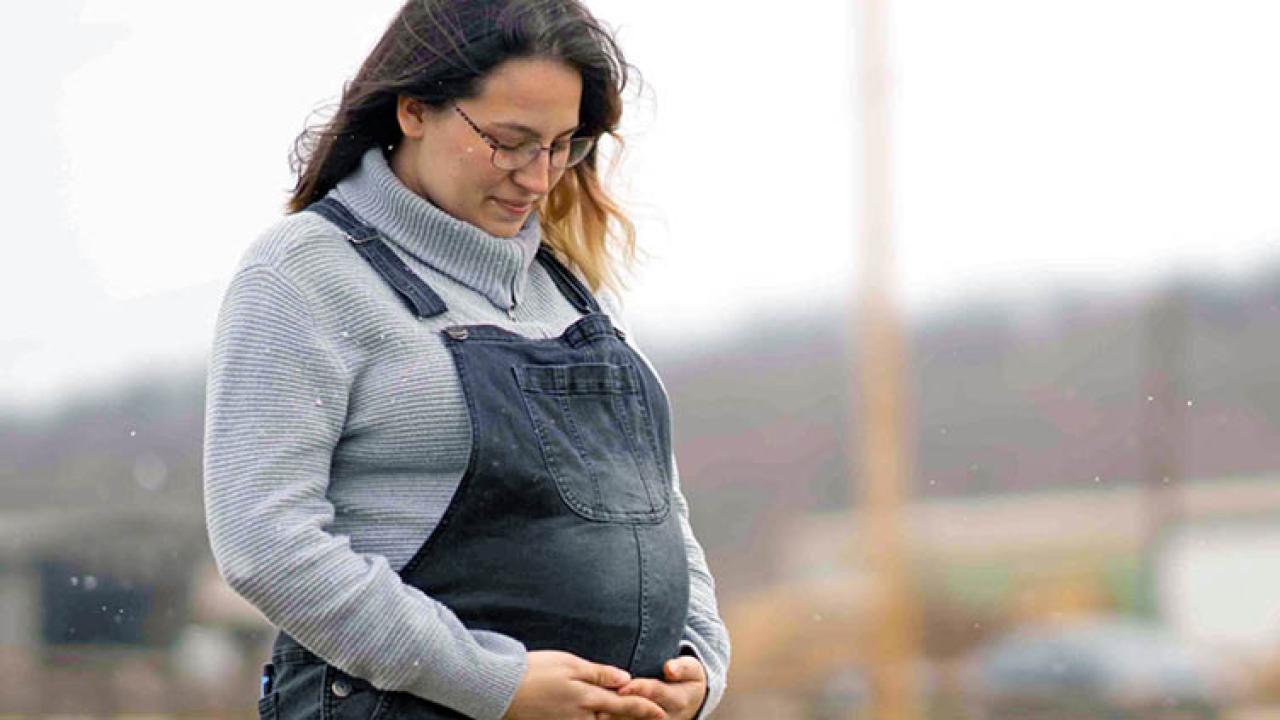Maternity Care Desert Report: Autumn (Full story)
HAWKING COUNTY, OHIO, MARCH 2023 — One month: that’s the timeframe in which Autumn found out she was pregnant with her first child and awarded custody of her four younger siblings.
Autumn is 31 weeks pregnant and lives in a maternity care desert just outside a little town called Laurelville (for reference, the population was 527 at the 2010 census). “It’s very secluded,” she says. “Which is nice, however if you want to go to any sort of town or gas station or store, it's usually at least a 30-minute drive.” And that includes a hospital.
Like many women in the county, Autumn goes to Adena Hospital in Chillicothe. “It's one of the closest hospitals that I have to my house, which makes me slightly nervous that I'm going to go into labor in the car,” she says. This is a very real possibility for Autumn—and a reality for too many pregnant women in rural America.
“I'm sure it can be a little bit nerve-wracking not knowing the outcome and knowing that your local hospital who can help you in any way is at least a 30-minute drive,” says Lindsey Jeffers, Community Health Worker.
Because of the distance “just to reach civilization,” Autumn tries to schedule her prenatal care appointments at the same time as one of her sibling’s therapy visits to keep travel to a minimum. “If I had access to something a little bit closer to home, I would probably go there just for sake of time and gas money, because it's a bit of a drive,” she adds.
Autumn isn’t the only one in her family spending too much time in the car. Her fiancé drives an hour and 10 minutes “just for a decent job,” and the kids are on the school bus for two hours.
A 2022 report by March of Dimes found that Ohio had the most women, approximately 97,000, impacted by overall reductions in access to care in the past two years. “We serve a multi-county area at our office, and we pull people who have to drive up to an hour away,” says Michelle Gorman, Community Health Worker, OhioHealth OB/GYN. “So, we do know that we are already a pre-existing maternity desert, probably even before that was a phrase kicked around.”
In Hawking County, 10.1% of residents live below the poverty line, including Autumn. “It can get overwhelming very easily,” she says. “There's a lot of resources that Hawking and Benton County offer. I've gotten set up with WIC, which is helping me out with milk and juice and fruit for the children. The resources in general that the community provides is really helpful.”
Pregnant women shouldn’t have to decide between putting their money towards gas, food, or bills—yet that is too often the case. “Everybody's different when it comes to their barriers,” says Lindsey Jeffers, Community Health Worker. “When you don't have the funds to get to your doctor's appointment, but you have to feed your family, that's a barrier you're going to have to choose and make a decision on.”
Another concern for Autumn is that Adena doesn’t have a NICU. “If anything was to be wrong with the baby, we would get shipped to Columbus area, which would be an hour drive from my house, if not a little bit more,” she says.
In Ohio, 13 of the 88 counties are maternity care deserts. And too many more exist in every state across the country. Of course, no one can truly know what the future holds for Autumn and her pregnancy. But what we all can—and must—do is help ensure that she, and millions of other moms and families in maternity care deserts, can access the care they need to have the best possible start.
